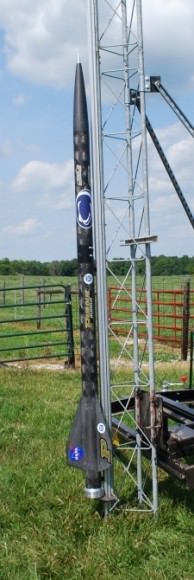[/caption]
NASA announced yesterday that it’s looking for new technology proposals using environmentally friendly fuels to launch payload. The space agency is hoping to move away from hydrazine, the fuel that currently launches anything that travels beyond the atmosphere from commercial satellites to private spaceflight and exploration probes.
As a rocket propellant, hydrazine is great. It’s incredibly efficient, can be stored for long periods of time, has excellent handling characteristics, is stable up to 250 degrees Celsius (482 Fahrenheit) under normal conditions, and decomposes cleanly.
It also happens to be extremely toxic.
Shifting away from hydrazine would be a shift away from known environmental hazards and pollutants. There would be fewer operational hazards for those dealing with fueled rockets before launch. The change could also simplify the complexity of the rockets’ systems and, possibly, increase overall propellant performance.

The benefits don’t stop there. Advantages on every level trickle down. “High performance green propulsion has the potential to significantly change how we travel in space,” said Michael Gazarik, director of NASA’s Space Technology Program at the agency’s headquarters in Washington. “By reducing the hazards of handling fuel, we can reduce ground processing time and lower costs for rocket launches, allowing a greater community of researchers and technologists access to the high frontier.”
Developing green propellants won’t be quick or easy. It will be a major challenge for NASA, particularly from a cost, schedule, and risk perspective. The agency has established the Technology Demonstration Missions Program at the Marshall Spaceflight Centre in Huntsville, Alabama to oversee the green fuel program. It will act as a bridge between laboratory confirmation of a technology and its use on a mission.
This isn’t the first time NASA has tried to develop green fuel. In 2009, the space agency and the US Air Force successfully launched a 9-foot rocket 1,300 vertical feet using a mixture of aluminum powder and water ice. The mixture, called ALICE, has been studied since the 1960s as an alternative propellant. The reaction between substances produces a large amount of energy during combustion and green exhaust products.
Environmental impact aside, fuels like ALICE could be manufactured on the Moon or Mars, negating the cost of sending propellants along as cargo on long-duration missions. This would be when designing long-term missions.

Aviation, too has been an outlet for NASA’s green fuel initiatives in the past. 2011’s CAFE Green Flight Challenge, sponsored by Google, had competitors in general aviation design aircraft capable of flying 200 miles in less than two hours and use less than one gallon of fuel per passenger. The first place winner of $1.35 million was the team Pipistrel-USA.com of State College, Pennsylvania used an electric aircraft that achieved twice the fuel efficiency required by the competition — they flew 200 miles on the equivalent of a half-gallon of fuel per passenger.
With this shift to green fuels, NASA hopes to partner with American companies to usher in a new environmentally friendly era of open access to space. The agency is planing to make multiple contract awards for green technologies with no single away exceeding $50 million.
Source: NASA


NASA has played a big part in going green they have worked with vollara to make amazing green technologies,To learn more please visit http://www.myvollara.com/tkelly
Whats wrong with Lox and Hydrogen
It works on bagels!
You can’t store it indefinitely. Hydrazine is used for year long missions.
One of the green/cheaper technologies looked at would be refrigerators for LH/LOX fuel depots. However, on crafts there is mass and power constraints that prohibit bulky and power draining technologies. If they knock the depot question, they can have a look on crafts too. But don’t hold your breath.
Low bulk density.. works better for upper stages practically, afaik LOX/LH2 is more often used in upper stages.
I hear they’re going really green…with the budget slashed, that is kinda an offshoot of not sending up half the rockets they were hoping to.
BTW, “The agency is planing to make multiple contract awards”. Is that a pun on the plane that soared with less than half the fuel necessary for the award?
Title should read “NASA going the way of the dodo”
Nope, NASA is catching up with other research groups on this one, who have already identified promising fuels as I have mentioned above.
I wish this crazy ‘Green’ idiology would finally die. It’s just becoming too extreme.
The motivation can’t be to become ‘Greener’. The motivation must be for better performance and lower costs.
Except that ADN, HAN, and in suitable cases propane/propylene provide _better_ performance than hydrazine, while lowering labor costs. Again, fewer hazmat suits and hazmat training all along the logistical chain mean more productivity and less turnover… in other words, more performance AND lower costs.
The _ideology_ is as valid for NASA as it is for the other, prior Air Force, academic, foreign, and commercial inquiries into new, more expedient AND lower-cost fuel systems, including those which are also better-performing.
see http://www.spacex.com
It is absurd to look at “green” fuels while having to use Cold War solid rocket technology for pork reasons. Those are by far the largest polluters the industry have. Therefore the opening to phase out SRBs for LRBs on the SLS is somewhat heartening. (Oy! Those US acronyms!)
On that measure I don’t think ALICE could be environmentally friendlier than liquid fuels, but I may be mistaken. A better example is the commercial hybrids, which at least minimizes particles while keeping the fuel replenishable. (You can make the used rubbers from grown organics.)
Hydrazine _is_ an example of “non” green. Your crews need full hazmat protection, which means more training, less productivity, and higher turnover… in other words, fewer missions, likely more delays, costing more money.